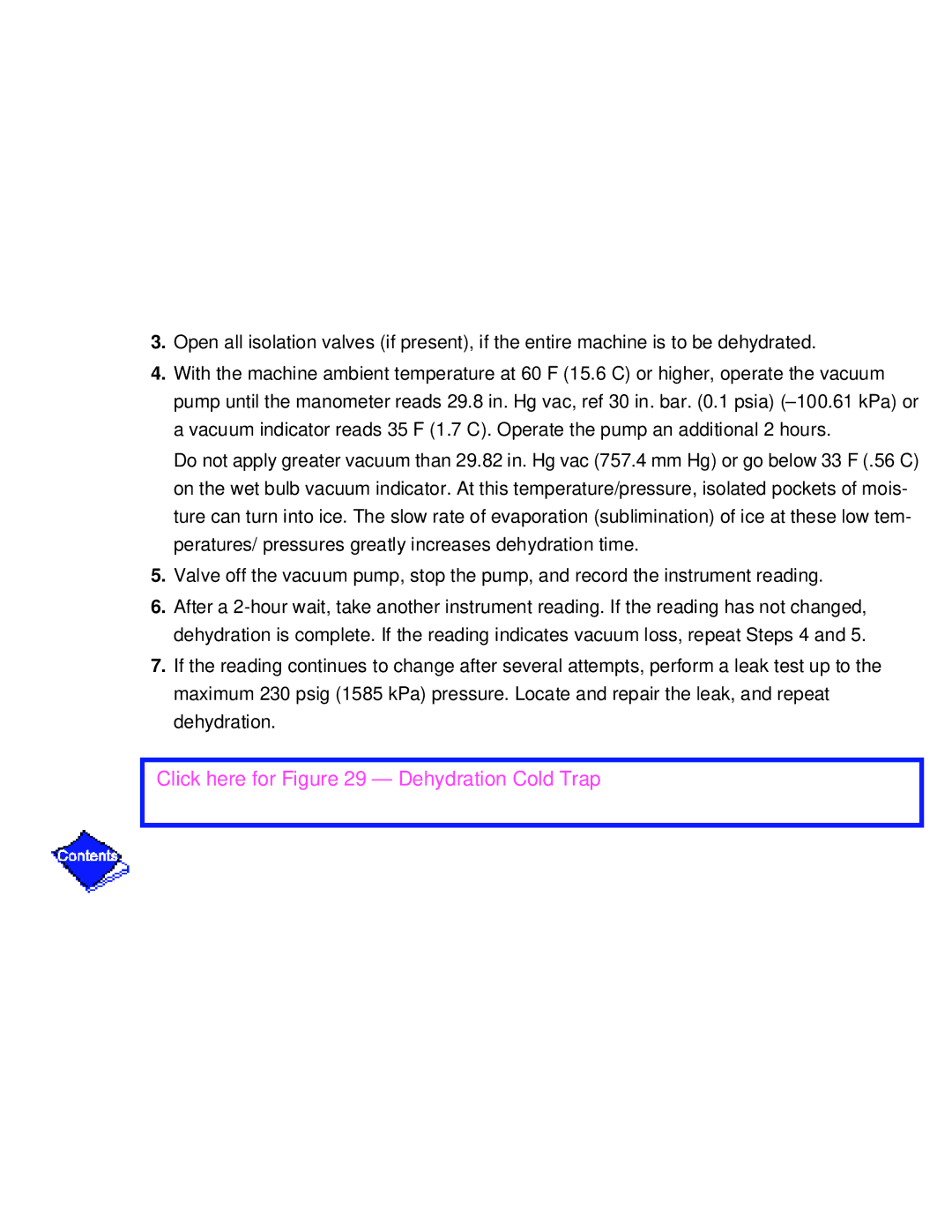
3.Open all isolation valves (if present), if the entire machine is to be dehydrated.
4.With the machine ambient temperature at 60 F (15.6 C) or higher, operate the vacuum pump until the manometer reads 29.8 in. Hg vac, ref 30 in. bar. (0.1 psia)
Do not apply greater vacuum than 29.82 in. Hg vac (757.4 mm Hg) or go below 33 F (.56 C) on the wet bulb vacuum indicator. At this temperature/pressure, isolated pockets of mois- ture can turn into ice. The slow rate of evaporation (sublimination) of ice at these low tem- peratures/ pressures greatly increases dehydration time.
5.Valve off the vacuum pump, stop the pump, and record the instrument reading.
6.After a
7.If the reading continues to change after several attempts, perform a leak test up to the maximum 230 psig (1585 kPa) pressure. Locate and repair the leak, and repeat dehydration.
